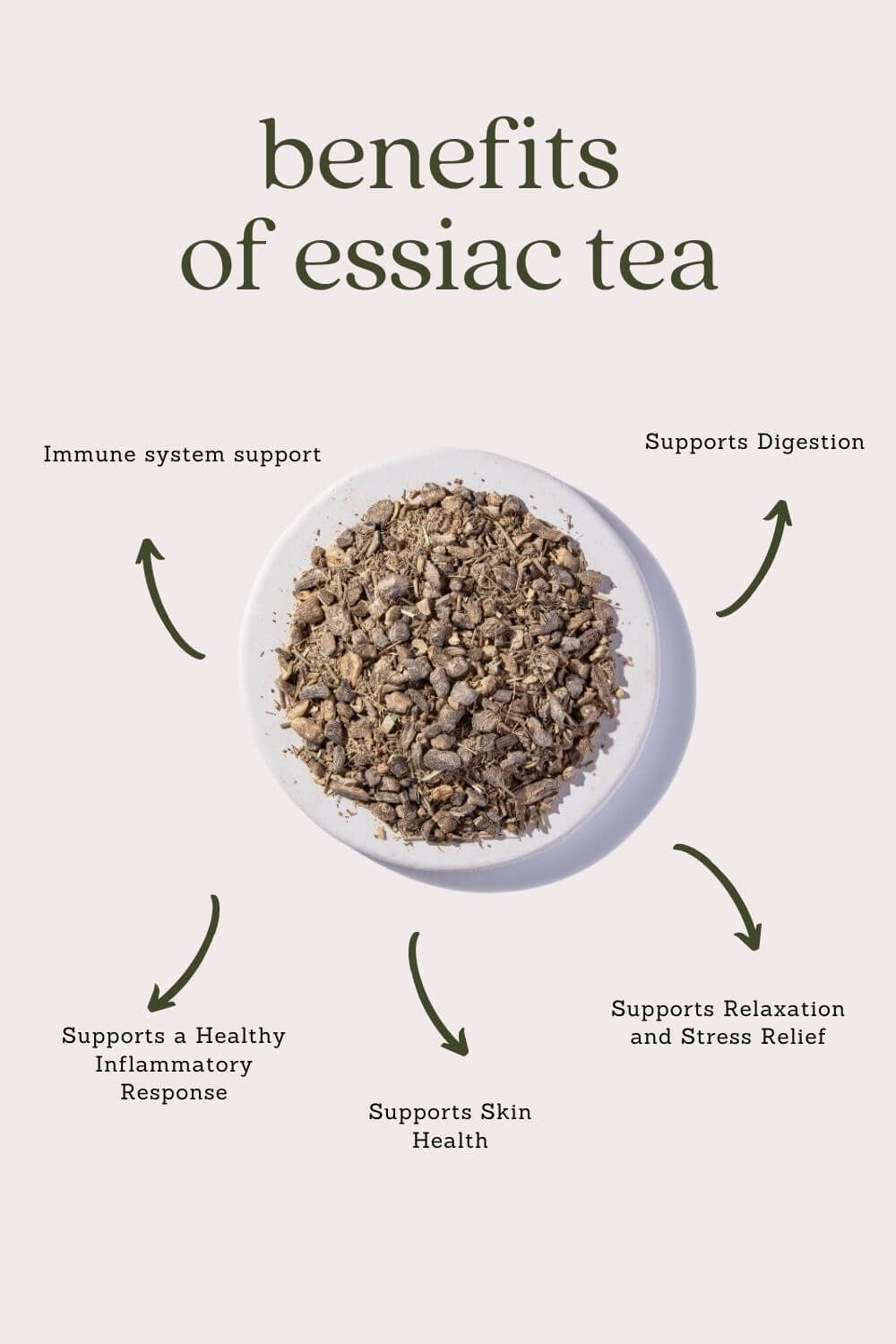The History of Essiac Tea: Ancient Wisdom in a Modern Cup | Starwest Botanicals
Posted by Jacqueline Genova on 02-07-2025

Essiac tea has a rich history of being used as a natural remedy for various health ailments. This herbal infusion has a fascinating history, with its origins tracing back to traditional Native American medicine. It was brought to prominence in the 1920s by Canadian nurse Rene Caisse. Rene learned of the recipe for Essiac tea in the 1920s from a patient. According to Caisse, the patient attributed her recovery to a recipe she had received from an Ojibwa medicine man. The patient shared the formula with Caisse, who began experimenting with it and eventually named it "Essiac" (her last name spelled backward).
Caisse worked with the herbal tea for decades, believing it had properties that may help support immune systems. Working alongside Dr. Charles Brusch, a former physician to President John F. Kennedy, Caisse spent years refining the recipe and exploring its potential health benefits.
So, you may be thinking, what is Essiac tea used for? As an herbal tonic, it’s been said to help the body detoxify, encouraging the elimination of harmful substances and promoting cellular health. While it’s best known for its immune system support, it’s also believed to support the management of GI conditions and may offer blood sugar support.
Essiac is made from a blend of roots, bark, and leaves. The traditional recipe includes four key ingredients: burdock root, sheep sorrel, slippery elm, and Indian (or Turkey) rhubarb root.

What are the benefits of Essiac Tea?
Here’s a deeper look at why Essiac tea might be worth considering as a part of your wellness routine . . .
1. Supports Detoxification
As mentioned previously, Essiac tea is known for its natural detoxifying properties. The herbs used in the blend are believed to help cleanse the body by supporting liver function and stimulating the elimination of toxins. Burdock root, for example, is often used in traditional medicine for its ability to purify the blood, while slippery elm may help soothe the digestive system.
2. Immune System Support
The ingredients in Essiac tea have been linked to immune system support. Sheep sorrel, for instance, is rich in antioxidants like vitamins A and C, which are essential when it comes to maintaining a robust immune system. Furthermore, burdock root contains compounds that may have soothing properties and immune-enhancing effects. Consuming Essiac tea, especially during the winter months, is a great way to support your body’s immune system, potentially making it easier to fend off illness.
3. Supports Digestive Health
Essiac tea’s combination of herbs may also be beneficial for the digestive system. Slippery elm is a well-known herb for its ability to support the gastrointestinal tract and help with issues like acid reflux or indigestion. By promoting a healthy digestive environment, it’s no surprise that Essiac may also help reduce bloating, promote regular bowel movements, and alleviate other discomfort associated with GI issues.
4. Supports a Healthy Inflammatory Response
If you’ve been following WellnStrong for a while, you probably know that chronic inflammation is associated with various health problems, from joint health to cardiovascular health. Another benefit of Essiac tea is that it contains compounds that may help reduce inflammation in the body. Sheep sorrel and burdock root, for example, have been shown to support a healthy inflammatory response.
6. Promotes Skin Health
Essiac tea has long been used for its purported benefits to skin health. The detoxifying effects of the tea, along with its antioxidant-rich ingredients, may help improve skin tone and reduce the appearance of skin issues. Burdock root, in particular, has been linked to supporting wellness for people who deal with acne acne by purifying the blood and supporting the skin.
7. Promotes Relaxation and Stress Relief
While Essiac tea is more commonly known for its detoxifying and immune-supporting effects, it also has a calming influence on the body. Slippery elm is soothing to the digestive system, which, in turn, may help reduce stress. Furthermore, the simple ritual of drinking a warm cup of tea can provide a moment of calm in your day, helping you to unwind and relax!
How to Make Essiac Tea
Making Essiac tea at home is simple, though it does require a bit of preparation. Typically, you can buy Essiac tea as a pre-packaged blend of the herbs, or you can make your own from scratch.
To prepare Essiac Tea:
- Boil 1 gallon fresh spring water or distilled water in a stainless steel pot.
- Stir in 4 oz of tea, cover pot.
- Boil 10 minutes.
- Remove from heat and stir. Cover and let sit for 12 hours at room temperature.
- Stir, cover, and bring to a boil. Remove from heat.
- Strain through a fine mesh colander. Funnel liquid into clean amber glass bottle and cap. Tighten cap after cooling.
- Refrigerate. Mixture will stay fresh for 2-3 weeks if refrigerated.
* If you are unable to weigh 4 oz of tea, you can use the following conversions:
- For Organic and Conventional Essiac Teas: 4 oz is approx. 275 ml or 1 1/6 cup.
- For Organic Trinity Essiac Tea: 4 oz is approx. 180 ml or 3/4 cup.
Directions for drinking:
Daily serving size: 4 oz
- Shake herbal tea to mix well. Add 2 fl oz tea to equal amount (2 fl oz) boiled fresh spring or distilled water.
- Drink 4 fl oz daily on an empty stomach, preferably before bedtime.
If you’d like to consume an already pre-made version, I’m a big fan of Starwest Botanical’s Essiac Tea Trinity Blend. This blend is also organic, which is a very important factor when it comes to choosing herbs. Organic herbs are grown without synthetic pesticides, herbicides, or chemical fertilizers, ensuring they are free from harmful residues. This not only supports your health by reducing exposure to potentially toxic substances but also promotes sustainable farming practices that protect the environment. Organic herbs are often richer in flavor and nutrients, as they are cultivated in naturally enriched soils.
While incorporating Essiac tea into your lifestyle may offer natural support to your body’s detoxification, immune system, and digestive health, it’s important to consult with your physician regarding changes to your medical routine.
Author Bio
Jacqueline Genova is a certified holistic nutritionist, wellness writer, and podcaster, who is passionate about healing through integrative medicine. She resorted to holistic healing approaches to resolve some of her own health problems, and to support her mom’s journey with Stage IV breast cancer. She is a graduate of Babson College where she researched and wrote a thesis that advocated integrative medicine as an alternative to conventional cancer treatment. She developed a passion to share what she learned with others that led to her founding WellnStrong™. She believes in a holistic approach to wellness that addresses the root causes of illness, and not the suppression of symptoms

Sources:
Essiac tea: scavenging of reactive oxygen species and effects on DNA damage
-
Authors: Leonard SS, Keil D, Mehlman T, Proper S, Shi X, Harris GK.
-
Journal: Journal of Ethnopharmacology, 2006.
-
Summary: This study found that Essiac tea possesses potent antioxidant and DNA-protective activity, which are common properties of natural anti-cancer agents.
Antioxidant and anti-inflammatory properties of ESSIAC and Flor-Essence
-
Summary: The research indicates that Essiac and Flor-Essence exhibit antioxidant and anti-inflammatory properties, which may contribute to their proposed health benefits.
Comparative flavonoids contents of selected herbs and associations of their radical scavenging activity with antiproliferative actions in V79-4 cells
-
This study compares the flavonoid content and radical scavenging activity of selected herbs, including those found in Essiac tea, and their antiproliferative effects on cells.
Analysis of free-radical scavenging of Yerba Mate (Ilex paraguriensis) using electron spin resonance and radical-induced DNA damage
-
While focusing on Yerba Mate, this study provides insights into the methodologies used to assess the free-radical scavenging abilities of herbal teas, which can be relevant for understanding Essiac tea's properties


